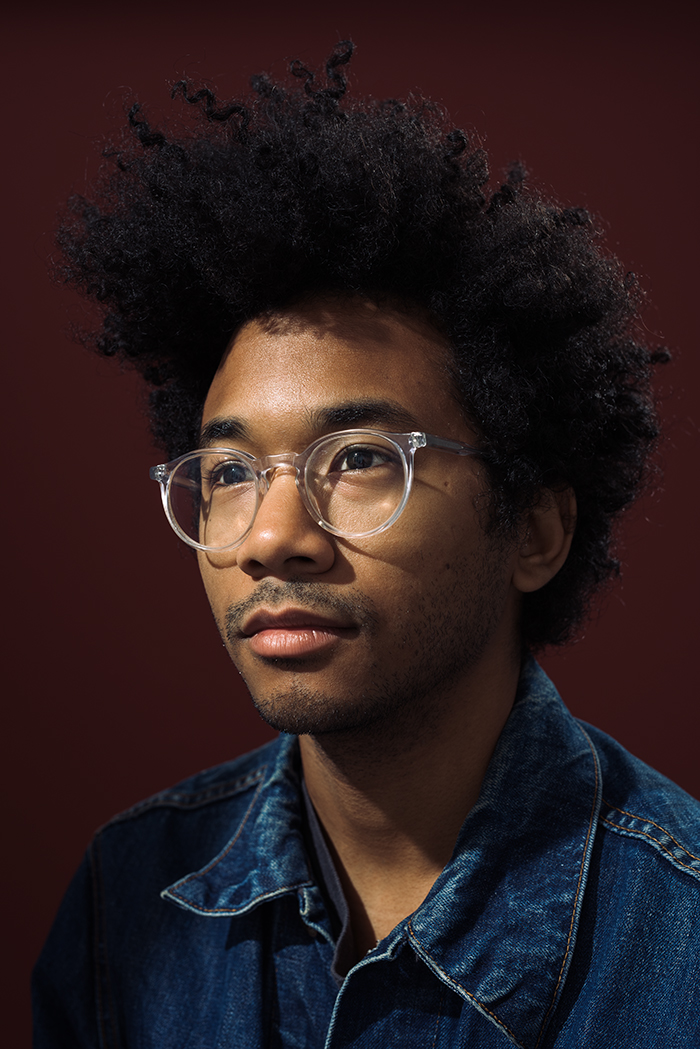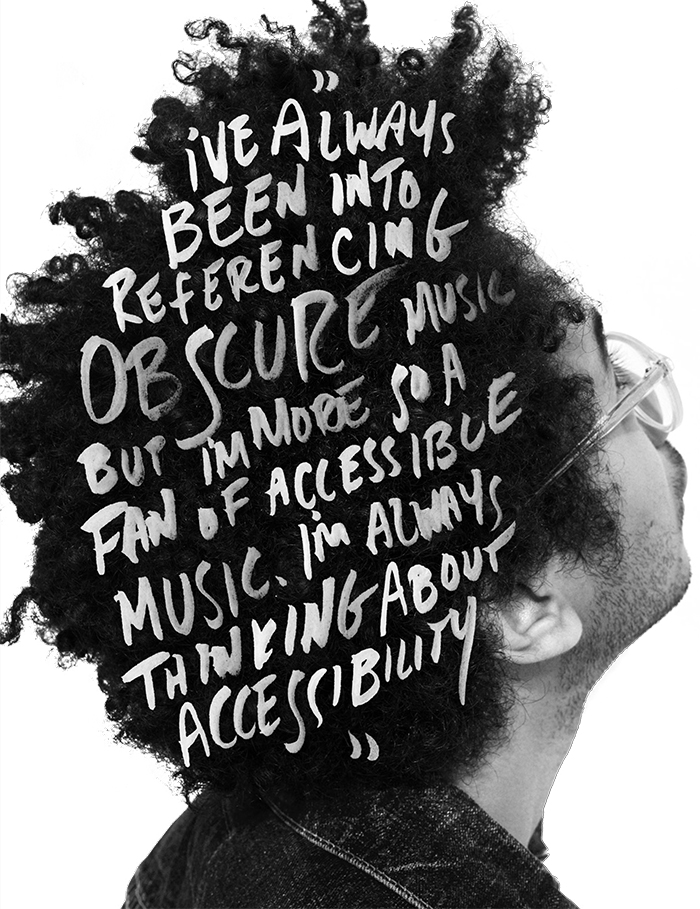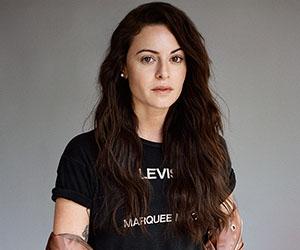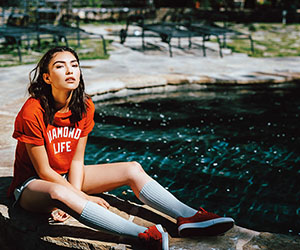
Few modern artists have the ability to mine influences and create work that is truly unique. A handful of names comes to mind—Daft Punk, Neptunes, Dilla, Kenny Dixon Jr, et al. Enter Chaz Bundick. Born and raised in the South Carolina suburbs in the ’90s by a black father who schooled him on bands like Weezer and Sonic Youth via college radio, while his Filipino mother turned up the mainstream jams, Chaz and friends of like mind were drawn to art- and music-centric skater culture. Molded by its expressive, rebellious proclivities, he played in garage bands and surrounded himself with positive people. Rather than his ethnicity, it was his penchant for wearing tight pants that got him poked at on occasion.
While studying graphic design at USC, Chaz and his indie rock band The Heist and The Accomplice hung out at the college radio station, jamming on the airwaves, moved by the music of Broken Social Scene, The Strokes, Interpol. Then he discovered sampling and started listening to Dilla. A deepened appreciation for genre was revealed. “Once you figure out how sampling works, you don’t hear genre anymore, you just hear grooves,” he says. Though Chaz is credited with giving rise to the chill wave movement as Toro y Moi, his musical narrative is an enchanting evolution of style and inspiration.
Fresh off the release of Toro y Moi’s Samantha mixtape, between TyM tour dates and obligations to his newly formed Company recording label, we caught up with the newlywed in hopes of learning more about the artist and the man.

With each of your TyM albums, you explore new territory. There was a pivotal shift between Anything In Return and What For. What was happening between those two albums?
It was the live show that influenced me, having a band that can perform what I’m writing. With What For, I thought about the actual performance, not just the idea the band can play it—who’s going to play what, when. I had a hard time when we were performing Anything In Return, trying to get the songs portrayed correctly. It bothered me that it didn’t sound like the record 100 percent. I wanted to make a record that would sound like the record, live. I had to simplify things, like having the rhythms not get too crazy. But I wanted to have some funky grooves in there. I’ve always appreciated Daft Punk’s drums. They’re always in mind whenever I make music. They think about what sounds classic and I really like how their stuff ages. I gather a lot of influence from the past. Right now mainly ’70s and ’60s, whereas earlier it was ’80s. With What For, instead of sampling stuff from the ’70s, I made stuff that sounds like it’s from the ’70s, without it being too retro.
On that note, you have a knack for utilizing influences without typifying them, which has carved out a definite TyM sound. Is this a conscious effort?
Sometimes I’m not sure if I have my own sound. I feel like a lot of people go for their own sound and they’re not just letting it come out. You can’t force your own sound to come through, you have to just let it flow and try your best to make something good. Next thing you know, in retrospect, you’ve created your own sound. But I still don’t even know what my sound is. I’m glad that people have started to recognize what it is [chuckles], ’cuz I don’t know exactly what sounds similar in all the records. I feel like it’s about having balance and perspective and not getting too far ahead of yourself or too obscure at the same time. I feel like a lot of indie acts can take it a little too far into obscurity. I’ve always been into referencing obscure music but I’m more so a fan of accessible music. I’m always thinking about accessibility.
Your output is super high. I can’t imagine you have much free time, yet your lyrics are full of love stories, romance, and relationship struggles. With such a bloated schedule, what inspires your writing?
They’re all small moments that happen within a day that I keep in mind. Whether it be a road trip, a vacation with my wife, or being away on tour. I feel like if you don’t have anything to say about relationships, there’s something wrong. That’s all we do as humans everyday is deal with relationships—people we work with, people we love. I’m always trying my best to work on myself, be a better person, not have an ego. But then again, working on myself is having an ego because I want to be better. It’s hard. My writing is mostly me trying to convey my emotions through a song because I can’t communicate them to people as easily.
What was the catalyst for your dance music alias Les Sins?
It was mainly to free up any preconceived notions of Chaz Bundick. I felt like it would free me up a bit more to do whatever I want genre-wise. I like all kinds of house music, from Omar S to Floating Points to Motor City Drum Ensemble. I feel there’s a lot of dance music that some fans may not be into that I like. I wanted to have fun with it and not feel the need to cater to an audience or certain sound.
You released The Les Sins full-length Michael on your new label Company Records. What’s your vision for the label?
I wanted to start producing bands and helping up-and-coming musicians who are down to collaborate with me and looking to break into the scene, tour and what not. Right now, Carpark is dealing with the logistical part of it, distribution, publicity, so luckily all I have to take care of is the roster. We’re starting small with it, seeing if there’s an audience, catering to those that are into the idea first. Whether it’s a small press cassette zine or limited edition vinyl. I don’t want to get too ahead of myself ’cuz it’s easy to get overwhelmed. I really admire how Sub Pop started off with zines and now they’re a ginormous entity with an airport store. That’s really cool. I want to start the way they started.
Catch Toro y Moi @ The Teragram Ballroom on November 9th for Red Bull’s 30 Days in LA. Until then, you can download Samantha here.
Photography by David M. Cortes
Typography + Art Direction by Rachel Many







